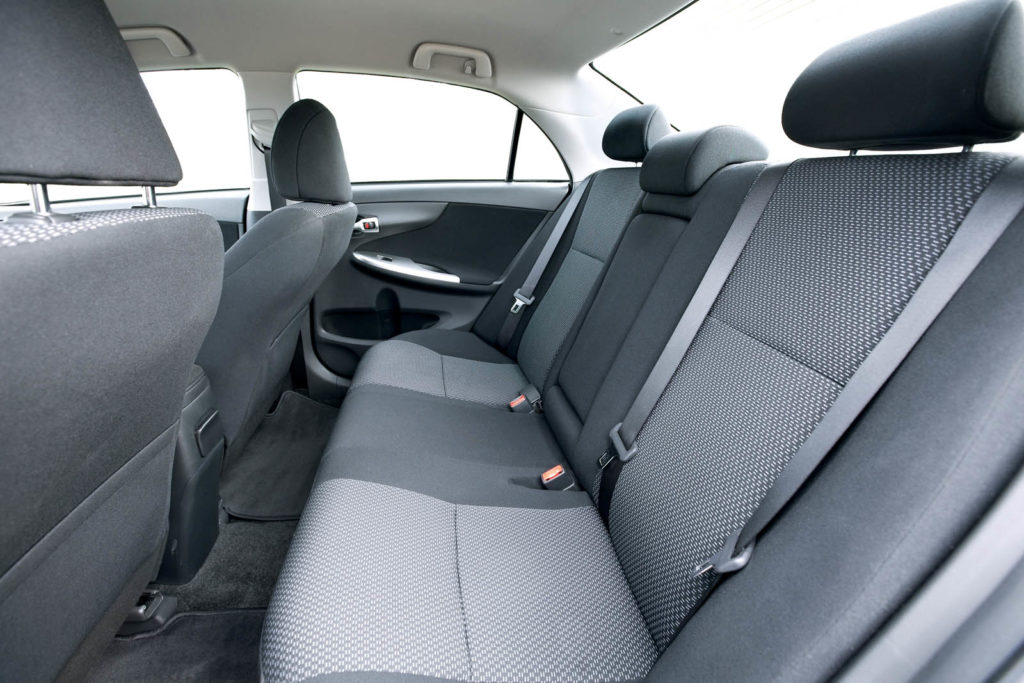
The magic target is 1.5 degrees Celsius. The Intergovernmental Panel on Climate Change (the United Nations body for assessing the science related to climate change) has set an ambitious goal to limit global warming to 1.5 degrees. Experts say that to maintain the global warming target, greenhouse gas emissions must be curtailed by one-third. Fuel emissions have a major effect on global warming. Petrochemical, synthetics, manufacturing, agriculture and construction are some of the important sectors that have their tasks cut out for them to reduce carbon dioxide and hence protect the environment. The transportation sector is eyeing nonmetallic components to tackle global warming.
The American economy grew rapidly after World War II due to the middle-class expansion into suburban neighborhoods, which relied on automobiles and good transportation infrastructure. With advancements in fabric structures from tricot knits to nonwovens to composites, the transportation sector has endeavored to use these fabric structures to enhance efficiencies. In automobiles, the use of fibrous structures results in weight reduction, enabling “vehicle end of life” goals and sustainability.
Nonwovens in transportation
Recently, the Association of the Nonwoven Fabrics Industry (INDA), headquartered in Cary, Ind, renamed the automobile sector as “vehicle construction” due to the use of nonwoven fabrics. This classification includes engineered fabrics used in lightweight vehicles, trucks, railways, airplanes and more. There are about 40 different components in passenger vehicles that use nonwovens or composites that include nonwovens.
“Nonwovens have proven themselves versatile in the transportation sector, saving resources and making vehicles quieter, lighter and more comfortable,” says Brad Kalil, director of market intelligence and economic insights at INDA.
Chris Plotz, director of education and technical affairs at INDA, adds, “Most anything fuzzy in a car is a nonwoven—including the seats, carpeting, headliner, trunk liner and hood liners, and a new class of undercarriage and wheel well materials that provide noise resistance and prevent ice buildup in cold winter driving.”
In the transportation and construction sectors, nonwovens find single-use, semi-durable and durable applications. Semi-durables include roofing substrates, while single-use items include filters used in homes and automobiles. Glass fiber mats and roofing components are prominent applications of nonwovens in the construction sector. While the nonwoven sector includes synthetics such as polypropylene and polyester, climate change and sustainability issues encourage the use of biodegradable and compostable materials.
The transportation sector provides plenty of opportunities to employ circularity through reusable and recycled materials. “I have used nonwoven backing and adhesives for lamination needs,” says Mir Quddus, senior scientist at Shurtape Technologies LLC. “The use of nonwovens in automotive seating/headliner applications is expected to grow in the coming years.”
Sustainability
Automotive and manufacturing sectors need to focus on green manufacturing, as it affects both their bottom-line profits and their contribution to combating climate change. Advanced textiles such as composites made using fibers, hybrid textile structures and nonwovens find good use. When metal components can be replaced with fibrous composites, they can reduce weight, resulting in fuel efficiency. Carmakers have come up with composite door panel components, tray panels and trunk parts using fibers. “The use of recyclables certainly will help with the reduction of greenhouse gases due to the ‘cradle-to-gate’ concept. Industries are exploring cost-effective ways by adopting product re-usage/re-purposing for a low carbon footprint,” says Quddus.
The textile industry is moving toward a circular economy, so recycled and post-industrial fibrous substrates are being examined. Cotton Inc., headquartered in Cary, N.C., has led efforts to use recycled cotton from denim in new applications such as insulation materials for automobiles. If flammable materials are used, flame retardant treatments are needed so that safety is not compromised. Headliner material is a composite structure consisting of recycled webs with paperboard with either needle-punched fabric or tricot knit fabric as a face material depending on the model of the automobile. “There is no greenhouse gas emission from nonwovens,” notes INDA’s Plotz, “but there are processes being used via recyclable materials in automotive textiles that support carbon-neutral products along with emission reduction measures.”

Interesting developments: A glimpse
Recently there has been growing interest in using discounted cotton, bast fibers and recycled blends to develop auto components. The U.S. Department of Agriculture’s Southern Regional Research Center in Louisiana pioneered the development of nonwoven soft pad-based composites for acoustic insulation in cars. Nonwoven fabric structures with pores and high-loft structures provide an efficient absorbent medium. Nonwoven fabrics such as those designed to reduce cost use shorter and discounted fibers. Nonwoven manufacturing processes such as airlaid and needlepunching are suited to develop headliners, trunk liners and acoustic insulation pads. More recently, alternative natural fibers such as kenaf, hemp and even jute have started being explored to develop composites for varied applications.
Plotz says some of the newest developments in transportation textiles can be found in the broad offerings of new electric vehicles. “These materials are increasingly attractive to designers and engineers due to their low weights and lower costs than traditional woven and knitted fabrics,” he says. “Advancements in polymer science are being incorporated into nonwoven technologies that make it easier to break the polymer bonds and revert the materials back into basic monomers that can be turned back into new automotive nonwoven materials.”
Texas-based Hobbs Bonded Fibers has been a leader in developing needlepunch-based nonwoven substrates for the automotive sector. Hobbs and other manufacturers are looking into alternative fibers to achieve green status. “By the end of 2022, Hobbs plans to start up a new production line that will allow for greater flexibility for renewable alternative natural fibers such as hemp, jute and other natural fibers,” says CEO Bill Neal. He says Hobbs has initiated a project to manufacture an all-fiber hood insulator to replace fiberglass and polyurethane, which will be a new direction for the industry.
The four Rs
Picture the industry as a table standing balanced on four legs. The four legs are reduce, recycle, reuse and regenerate. As the transportation sector is highly cost sensitive, even while advocating for sustainability, it is important to be cognizant of costs, which will help the industry move forward with new products at competitive price and quality levels.
Transportation textiles have important roles to play in reviving the economy. The use of sustainable products and processes helps with combating climate change. With the recently passed Infrastructure Investment and Jobs Act, resources will be available to enhance the life and quality of roads with structures like geotextiles and geogrids, to name a couple. In addition, such policy initiatives will support greater collaboration among researchers, the end user community and industry. Cost-effective advanced fiber-based structures that help with sustainability will be the way forward.
Dr. Seshadri Ramkumar is a professor in the Nonwovens and Advanced Materials Laboratory at Texas Tech University.
 TEXTILES.ORG
TEXTILES.ORG


